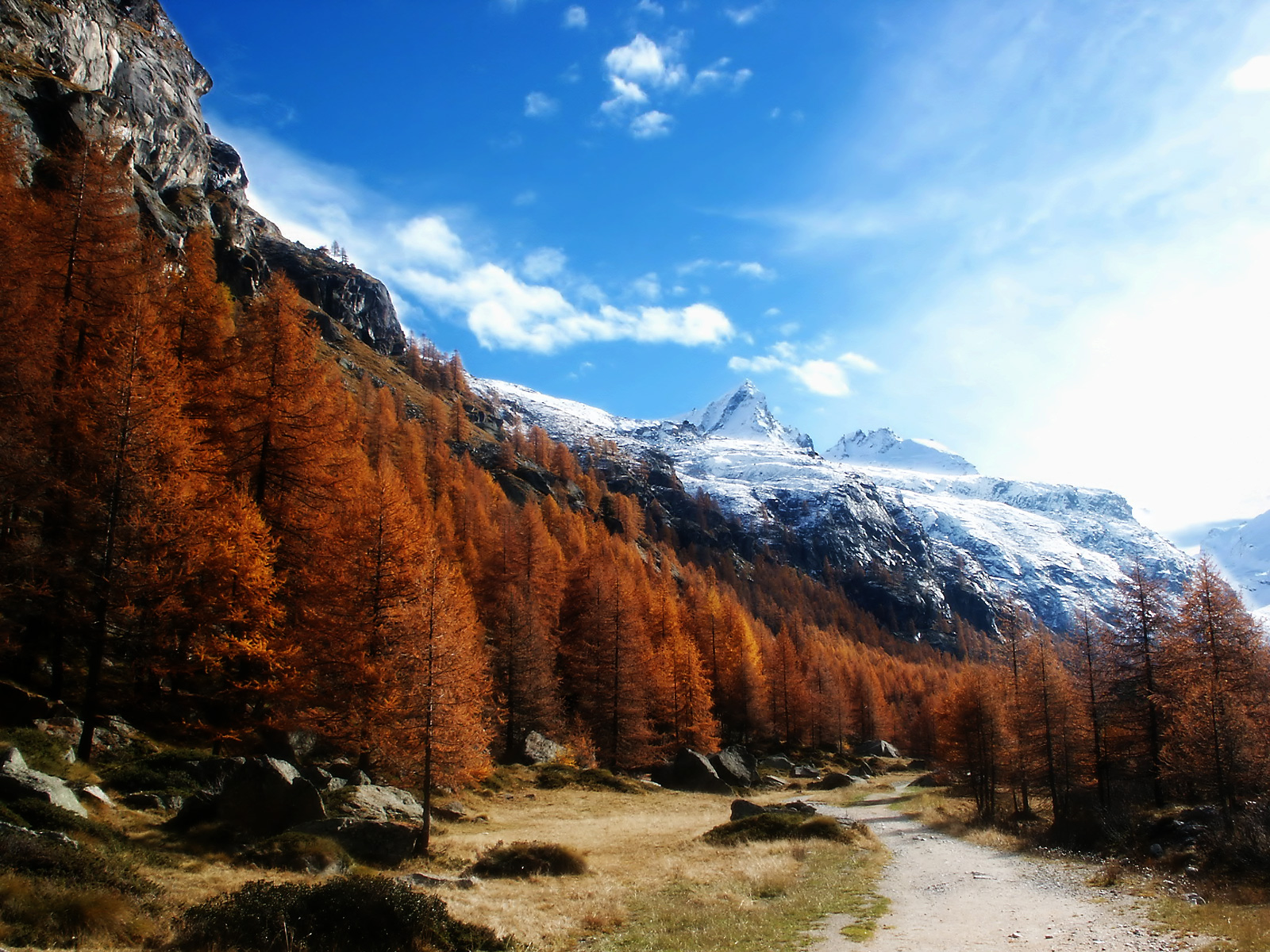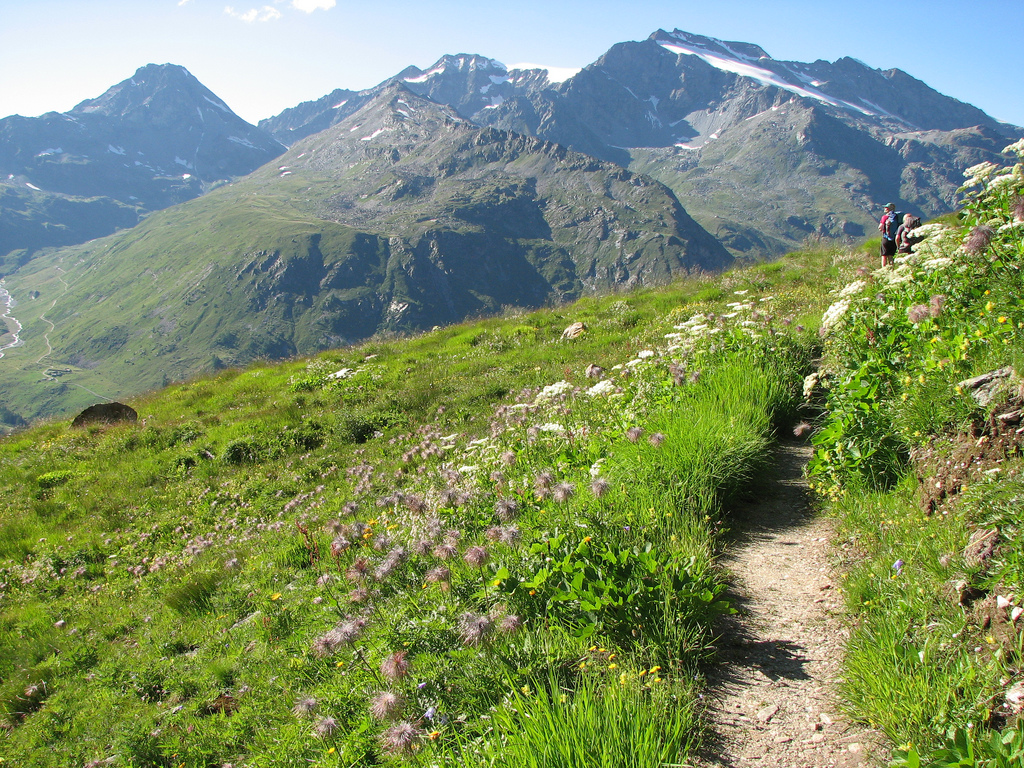
Grand Paradiso National Park
This post is also available in:
 Italiano (Italian)
Italiano (Italian)
Established in 1922, Gran Paradiso National Park is the oldest Italian National Park together with the Abruzzo National Park (which was established a little later).
Managed by its own administration, it straddles Valle d’Aosta and Piedmont, while on the French side borders with Vanoise National Park. It covers an area of 175.000 acres, on mainly alpine terrain.
The park occupies part of the Gran Paradiso Royal Hunting Reserve, created by the young King Vittorio Emanuele II in 1856: he had gone hunting there in 1850 and had highly appreciated the whole area.
In 2000, it was also recognized as a Site of Community Interest (SIC) and it is now part of the “Important Bird Area Gran Paradiso”. In 2006, the park was awarded the European Diploma of Protected Areas – a most prestigious recognition, renewed also in 2012.
The territory
Gran Paradiso is the only mountain massif that rises over 13.123 entirely in the Italian territory. The park includes five valleys: Val di Rhèmes, Val di Cogne, Valsavarenche, Valle dell’Orco, and Val Soana. The limit of perennial snow is located at about 9.842 ft above sea level. The altitude range between 9.842 and 13.123 ft above sea level includes 59 glaciers, the largest found on Valle d’Aosta side – at least 29 of them are constantly monitored by park rangers: they are perennial glaciers but relatively recent, as they formed during the “little glaciation” in 1600.
The park is rich in lakes (including Nivolet Lakes – the largest and most evocative, located in the area surrounding Colle del Nivolet – Lake Pellaud in Val di Rhèmes, Lake Lillet in Valle dell’Orco, Lake of Dres, on the opposite side of Valle dell’Orco, Lake Lauson and Lake Loie, in Val di Cogne, as well as streams and waterfalls (the most spectacular are those of Lillaz, a hamlet of Cogne).
The flora
At the lower altitudes, the vegetation is characterized by larch forests, grasslands, broad-leaved woods of European aspens (Populus tremula), hazels (Corylus avellana), sweet cherry trees (Prunus avium), sycamore maples (Acer pseudoplatanus), oaks (Quercus spp.), chestnuts (Castanea sativa), ashes (Fraxinus excelsior), birches (Betula spp.), and rowans (Sorbus aucuparia). The beech woods (Fagus sylvatica) between 2.624 and 3.937 ft, are found only on the Piedmont side.
Between 4.921 and 6.562 ft, there are coniferous forests; in Val di Rhemès, the Swiss stone pine (Pinus cembra) is quite widespread, while in Val di Cogne, near Vieyes, Sylvenoire and Chevril, silver firs (Abies alba) are abundant.
Norway spruce ( Picea abies) and larch (Larix europaea) are the species widespread in all the valleys, the latter featuring a thick undergrowth of rhododendrons (Rhododenrum ferrugineum), blueberries (Vaccinium myrtillus), raspberries (Rubus ideaus), woodland geraniums (Geranium sylvaticum), and wild strawberries (Fragaria vesca).
Among the most valuable flower species, there are martagon lilies (Lilium martagon), typical of the wood, orange lilies (Lilium croceum), mostly in the sunny meadows, and the poisonous monk’s hood (Aconitum napellus) along the waterways. Between the highest belt of the woods and 7.217 ft, there are vast expanses of rhododendrons (Rhododenrum ferrugineum).
Above 8.202 ft, among the rocks, there is saxifrage (Saxifraga spp.), alpine rock-jasmine (Androsace alpina), the alpine chickweed (Cerastium alpinum), glacier buttercup (Ranunculus glacialis) and, extremely rare, edelweiss (Leontopodium alpinum), and wormwood (Artemisia spp.). Peat bogs and wetlands are colonized by Scheuchzer’s cottongrass (Eriophorum scheuchzeri), which blooms in the summer.
The fauna
The true symbol of the park is the ibex, with some 2700 recorded specimens in 2011. There are also chamois, no longer threatened of extinction thanks to the complete lack of natural predators, foxes and the wolves; the latter, have returned to the park (today we’ve got some 6-7 specimens) between Valsavarenche, Val di Rhèmes, and Valgrisenche (a lone wolf has been spotted in Val di Cogne as well). There are also about 6.000 marmots.
Birds species include buzzards, woodpeckers, tits, ptarmigans, choughs, sparrow hawks, goshawks, owls, 27 pairs of golden eagles (2013 census), and the recently reintroduced bearded vulture, which has begun to nest again.
Two species of trout swim in the lakes and the streams: one it’s native – the brown trout, while the other is allochthonous – the brook trout. The latter was introduced in the 1960s mainly for tourism purposes.
In the small alpine lakes of Nivolet Superiore, Trebecchi Inferiore, Trebecchi Superiore and Lillet, there is a small crustacean, the Daphnia middendondorffiana .
Among reptiles, there are the common vipers, typical of dry areas, and, among the amphibians, salamanders.
Activities
In addition to protection and conservation of the natural environment, Gran Paradiso National Park operates as a scientific research body on the fauna and the local vegetation, through monitoring and census activities thoroughly carried out on the whole territory – in collaboration with several universities and research centres (including the CNR).
The park offers a true wealth of leisure activities: different sports, hiking, recreational and cultural opportunities, etc.. Late spring and summer are the months of flowering and recommended for high altitude hiking. In autumn, the woods are incredibly coloured, while the chamois mating season begins. In winter, the snow-covered area it’s perfect for snowshoe trekking, cross-country skiing and mountaineering, with the possibility of spotting wild animals in the beautiful winter wonderland.
This post is also available in:
 Italiano (Italian)
Italiano (Italian)







